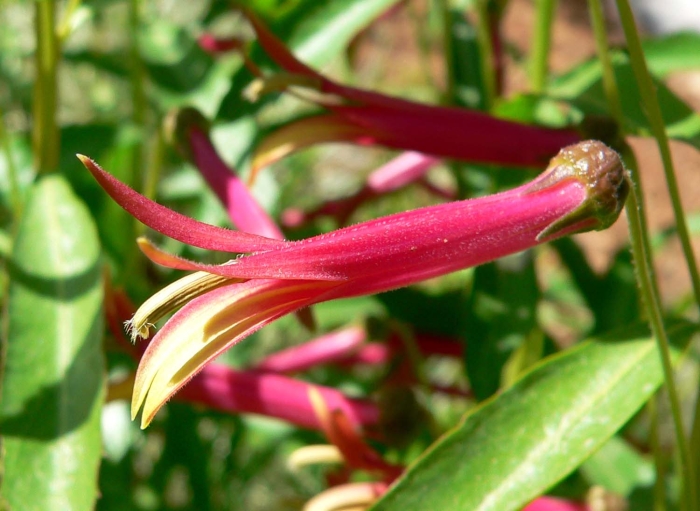Sierra Madre Lobelia
(Lobelia laxiflora)
Sierra Madre Lobelia (Lobelia laxiflora)
/
/

Stan Shebs
CC BY-SA 3.0






















































Estimated Native Range
Summary
Lobelia laxiflora is valued for its vibrant flowers and ability to attract wildlife, making it a popular choice for gardeners looking to create a hummingbird garden. It is often used in border plantings, as a specimen plant, or in naturalized areas. This plant is drought-tolerant, requiring low amounts of water once established, and it thrives in well-drained soils with a preference for full sun to part shade conditions. While it is generally low-maintenance, it can be susceptible to root rot if overwatered or planted in poorly drained soils. Gardeners should be aware that in some areas, it may spread aggressively through its runners.CC BY-SA 4.0
Plant Description
- Plant Type: Subshrub, Herb
- Height: 2-3 feet
- Width: 4-6 feet
- Growth Rate: Rapid
- Flower Color: Yellow, Red, Orange
- Flowering Season: Fall
- Leaf Retention: Evergreen
Growth Requirements
- Sun: Full Sun, Part Shade
- Water: Low
- Drainage: Medium
Common Uses
Bee Garden, Bird Garden, Border Plant, Butterfly Garden, Deer Resistant, Drought Tolerant, Groundcover, Hummingbird Garden, Low Maintenance, Rock Garden, Salt Tolerant, Showy Flowers, Street Planting
Natural Habitat
native to the pine-oak woodlands and forest edges in the highlands of Central America and Mexico down to Colombia
Other Names
Common Names: Mexican Lobelia, Mexican Cardinalflower, Looseflowers Lobelia, Drooping Lobelia
Scientific Names: , Lobelia laxiflora, Lobelia laxiflora var. laxiflora, Siphocampylus warscewiczii, Dortmanna laxiflora, Dortmannia concolor, Dortmannia laxiflora, Lobelia floribunda, Lobelia persicifolia var. warscewiczii, Rapuntium laxiflorum
GBIF Accepted Name: Lobelia laxiflora Kunth